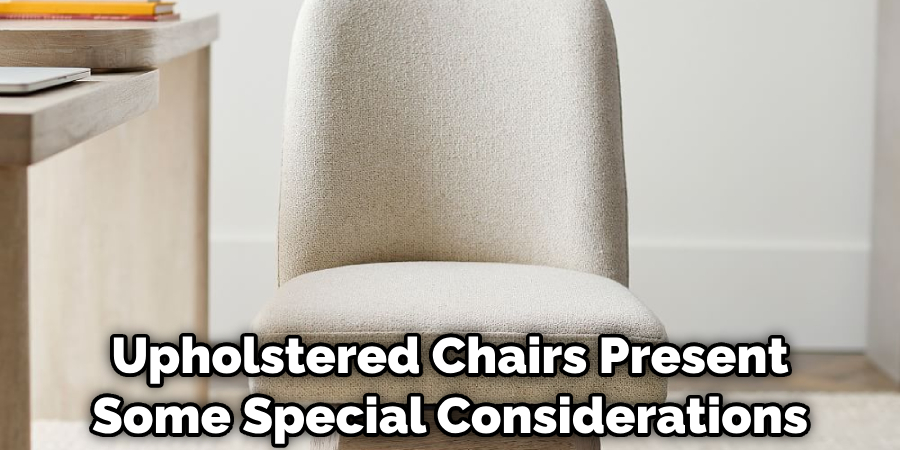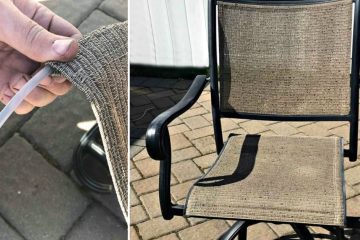Sitting in your favorite upholstered chair should be a moment of blissful relaxation, but when an orchestra of squeaks and creaks accompanies your every move, that tranquility quickly vanishes. The frustration of a squeaky chair can be maddening, disrupting your comfort and shattering the peaceful ambiance you seek.

However, addressing the issue of a squeaky upholstered chair is not just about eliminating an annoying noise – it’s about preserving the longevity and functionality of your cherished furniture. By taking the time to identify and resolve the source of the squeak, you can how to fix a squeaky upholstered chair also remains a serene oasis for years to come.
Key Takeaways:
- Identify the source of the squeak (joints, springs, frame) through a thorough inspection
- Tighten loose screws, lubricate springs, and repair any frame damage
- Address upholstery issues and worn padding to stop squeaks
- Implement proactive maintenance like regular tightening and lubrication to prevent future squeaks
7 Ultimate Steps for How to Fix a Squeaky Upholstered Chair
Here are the steps for how to fix a squeaky upholstered chair:
Step 1: Identify the Source of the Squeaky Serenade
Thoroughly examining your chair is akin to detective work – the more diligent you are in your investigation, the better your chances of identifying and silencing the source of the squeak. Gently move the chair, shift your weight, and listen carefully to determine where the aggravating noise is coming from. Is it the joints, the springs, or the frame?
Step 2: Zeroing in on Loose Joints
If the squeak seems to be emanating from the chair’s screws and bolts, the solution is often as simple as tightening any loose screws. Use a screwdriver or wrench to snug up the connections, but be careful not to over-tighten, as that can lead to stripped threads.
Step 3: Addressing Troublesome Springs
Squeaky springs are another common offender. Flip the wooden chair over and apply a generous coating of silicone-based lubricant or WD-40 to each spring. Work the lubricant in by manually wiggling the springs. If the squeak persists, the springs may need to be replaced.
Step 4: Examining the Frame
Unseen cracks or weaknesses in the chair’s frame can also cause chair squeaks. Thoroughly inspect the underside with a flashlight, looking for any signs of damage. If found, apply wood glue and clamp the frame until the glue dries.
Step 5: Unique Tactics for Upholstered Chairs
Upholstered chairs present some special considerations when tackling squeaks. The soft, plush materials can sometimes be the culprit, creating friction and unwanted noise.

Step 6: Addressing Upholstery Issues
If the squeak seems to be coming from the upholstery, try applying a fabric softener or silicone-based spray lubricant to the affected area. This can help reduce friction. If the issue persists, you may need to consider reupholstering the chair.
Step 7: Dealing with Worn Padding
Worn-out padding can also contribute to squeaks. Feel the chair for any unusually hard spots, which may indicate the padding needs to be replaced. This is a more involved process, but can effectively silence that annoying squeak.
You Can Check It Out to Fix a Small Hole in a Cane Chair.
Prevent Future Squeaks with Proactive Maintenance
The key to keeping your upholstered chair blissfully quiet is regular, proactive maintenance. Follow these tips to prevent future squeaks:
1. Regularly Tighten Screws and Bolts
Routinely check the screws and bolts on your chair and tighten any that have loosened over time. This helps maintain the stability of the chair’s frame and joints, preventing the development of squeaks.
2. Periodically Lubricate Moving Parts
Apply a silicone-based lubricant or WD-40 to the moving components of your chair, such as the springs and any pivoting mechanisms. This helps reduce friction and wear, stopping squeaks before they start.
3. Inspect the Chair for Signs of Wear and Tear
Take the time to closely examine your chair, looking for any cracks, loose parts, or other issues that could lead to squeaks down the line. Address these problems early to avoid bigger headaches.

4. Address Issues Promptly to Avoid Bigger Problems
Don’t wait until the squeaking becomes unbearable. As soon as you notice any concerning developments, tackle the problem head-on. Addressing issues quickly will save you time, money, and a whole lot of frustration.
By incorporating these proactive maintenance practices into your routine, you can ensure your upholstered chair remains a peaceful sanctuary for years to come.
FAQs About How to Fix a Squeaky Upholstered Chair
Why Does My Chair Creak When I Move?
Your chair creaks when you move due to common issues like loose bolts and screws, wear and tear, dry joints, lack of lubrication in moving parts, or broken components. To address this, you can tighten all connections, lubricate metal parts with WD-40 or a similar product, inspect for and repair damage, or add padding between joints for a quick fix. If these solutions don’t help, it may be time to consult a professional or consider getting a new chair.
Why Does My Couch Creak When I Sit on It?
Your couch likely creaks when you sit on it due to similar reasons as other furniture experiencing stress, such as loose joints or the frame, wear and tear on the material, dry or worn-out springs, and insufficient lubrication on moving parts for models with reclining features. Over time, the continuous use can cause the internal structure, like the wooden frame or the springs, to loosen or degrade, resulting in noise when pressure is applied. To remedy this, you might try tightening any accessible screws or bolts, applying lubricant to metal parts if applicable, placing additional support under sagging areas, or consulting with a furniture repair specialist for a thorough inspection and repair.
Can You Use Olive Oil on a Squeaky Chair?
While olive oil can be used as a quick, temporary fix for lubricating a squeaky chair, it’s not the best long-term solution. It can attract dust and dirt, potentially worsening the problem, and may go rancid, leaving an unpleasant odor. For a more durable fix, it’s recommended to use specialized lubricants like WD-40, silicone spray, or graphite-based lubricants, designed to provide lasting lubrication without attracting grime or degrading over time.
Conclusion
In this comprehensive guide, we’ve explored the various causes of squeaks in upholstered chairs and outlined effective strategies to silence the irritating noises. From tightening loose screws and bolts to lubricating springs and addressing upholstery issues, you now have the knowledge and tools to tackle this common furniture challenge.
Emphasizing proactive maintenance is key – by regularly inspecting your chair and addressing any issues promptly, you can prevent future squeaks and keep your cherished upholstered furniture in top condition. So don’t hesitate to dive in and put these techniques to the test. With a little effort, you can restore the tranquility to your living space and enjoy your squeaky-free chair for years to come.


